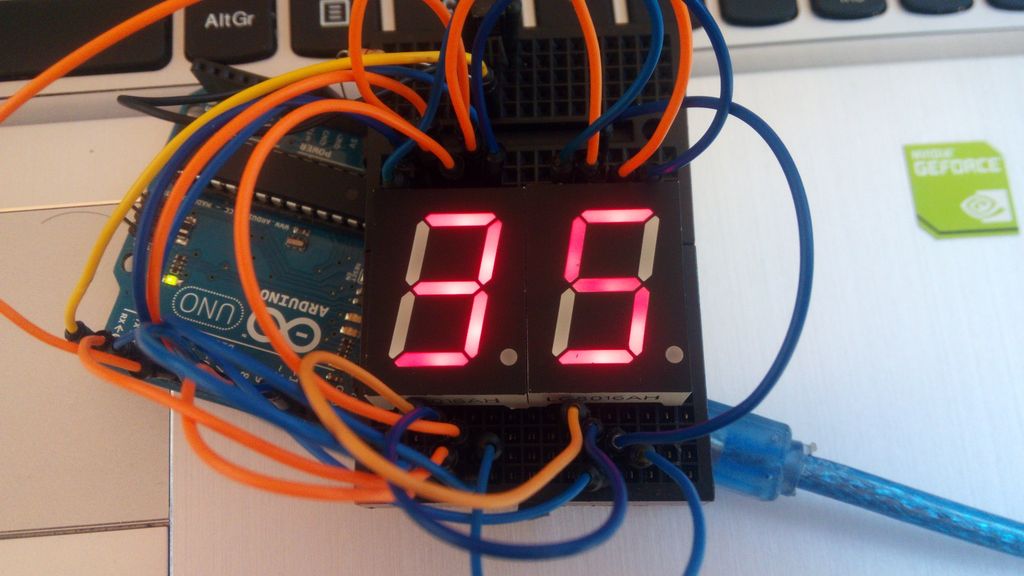
Check that L remains ON for 10 seconds and OFF for 5 seconds. Convert the Text Codes of Step-3 into instructions as follows: (L of UNO works for your Lamp) void setup() (4) If Step-4 is satisfied, make your lamp ON.Ĥ. (3) Check that Millis-Counter has advanced by 1 hr (60 601000 = 3600000 ms) from the value of the past Millis-Counter of Step-2. (2) Read the present time of the Millis-Counter and keep it in the variable presentMillis. Now, you can design your program as follows:

The accumulated time of the Millis-Counter could be read at any time using the following command: unsigned long presentMillis = millis() ģ. Hour Timer 1 H 2 H 4 H 8 H Time Left to Holidays Online Timer Online timer is a web tool. The maximum time that the counter can accomodate is 2 32 ms.Ģ. Arduino Demonstration of an alarm triggered by a DS3231 RTC. In this example the delay timer is stopped and the LED turned off. When the timer exceeds the value of the interval the desired action is taken. All you need to do is specify the interval, and the library will take care of everything else.When uploading of a sketch is done in the UNO, a "32-bit Time-Counter or Millis-Counter" is automatically started within the MCU and updated by 1 ms. During each pass of the loop(), the difference between the current millis() and the delayStart time is compared to the DELAYTIME. If you are using a library like TimerOne, you need not worry about these calculations. However, you need to perform these calculations only when setting the registers manually. You can perform similar calculations when using Timer1 and Timer2. Now you can understand why the millis() function uses Timer0. The Kidde Fire Systems ARIES-SLX manages fire response events from detection and alarm. Thus, it counts from 0 to 255 in 0.000004*255 = 0.00102 seconds, which is approximately 1 millisecond. Create one or multiple timers and start them in any order. They range from a 1 second timer - up to a year timer Its pointless - but you asked for it :-) Remember If the timer you want is not here - just make ANY timer you want above.
#1 HOUR TIMER ARDUINO FULL#
It makes one count in every (1/250,000) = 0.000004 seconds. Back Use this 1 Hour Full Screen Here are some great pre-set timers ready to use. They are widely used in modern farms, gardens, golf courses, greenhouses and other such places. Thus, its frequency is (16MHz/64) = 250 KHz. 1: Prototype of Arduino and RTC DS1307 based Device ON-OFF Timer One of the examples of this system is time operated automatic water pump and valve. For example, Timer0 uses a divisor of 64. They divide the input clock frequency by a factor, and the timers then use that reduced frequency to count. This number is quite large but is well within the scope of an unsigned long: 32 bits (232. delay (x) will delay for x number of milliseconds. In other words, you would want to count slower than the max rate. Yes you can write delay (25200000UL) and it will delay for 7 hours.

However, for most applications, you would want longer intervals (lower frequencies).
#1 HOUR TIMER ARDUINO HOW TO#
Therefore, no timer can have intervals shorter than (1/16000000). In this tutorial we will learn how to make a Countdown Timer, you can set time When timer. The millis() function returns the current time in milliseconds (1/1000th of a second) from when you powered up the. Note that the clock frequency of Arduino Uno is 16 MHz. You can use Timer1 and Timer2 for your custom requirements. 1 Answer Sorted by: 22 The best way to think about the Arduino Nano timers is to think about the timers in the underlying chip: the ATmega328. Internally, Timer0 is used for the millis() function, and therefore, it is recommended not to mess with it.

Timer0 and Timer2 are 8-bit counters (they count from 0 to 255), while Timer1 is a 16-bit counter (it counts from 0 to 65535).

#1 HOUR TIMER ARDUINO CODE#
As discussed earlier, Arduino Uno has 3 timers: Timer0, Timer1 and Timer2. This code is to use Arduino as timer to control relay with potentiometer.


 0 kommentar(er)
0 kommentar(er)
